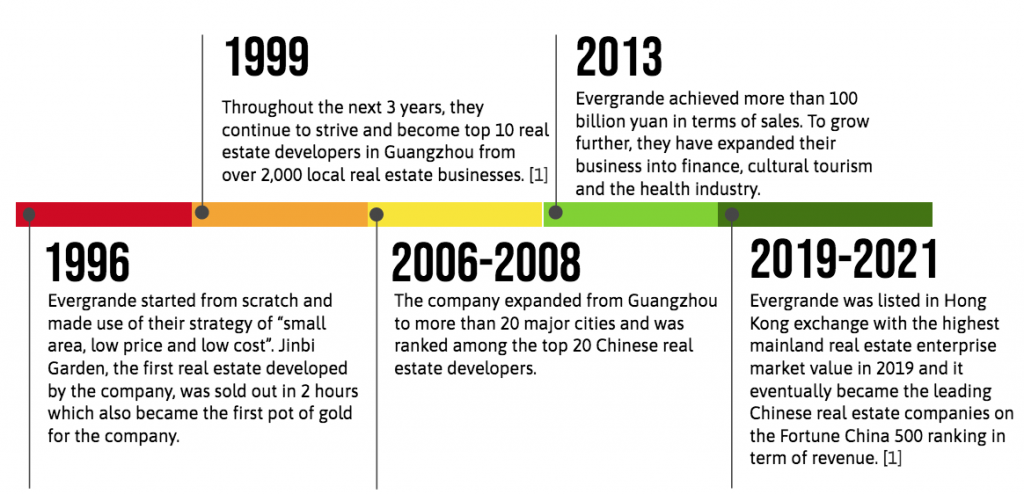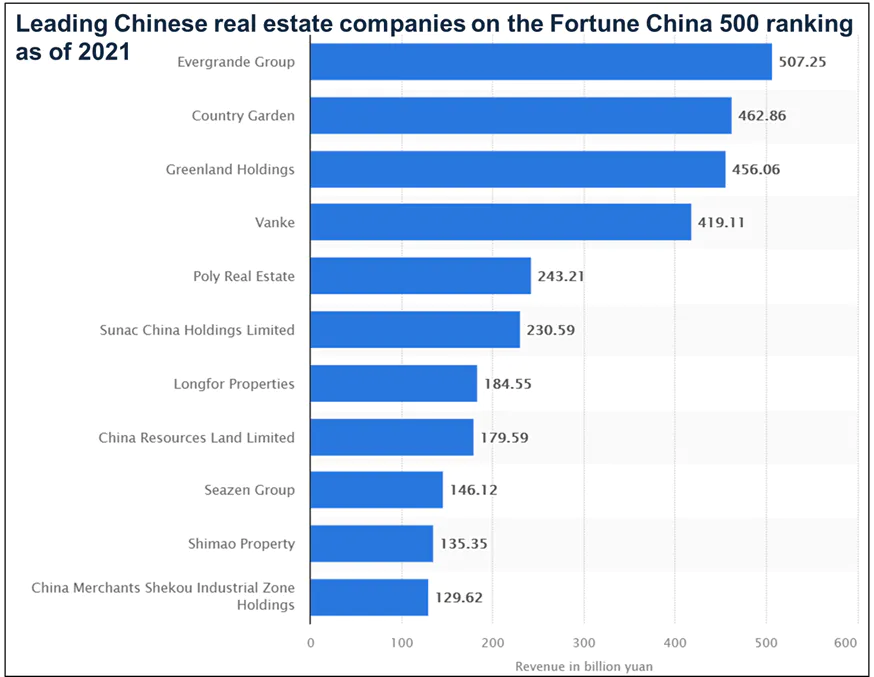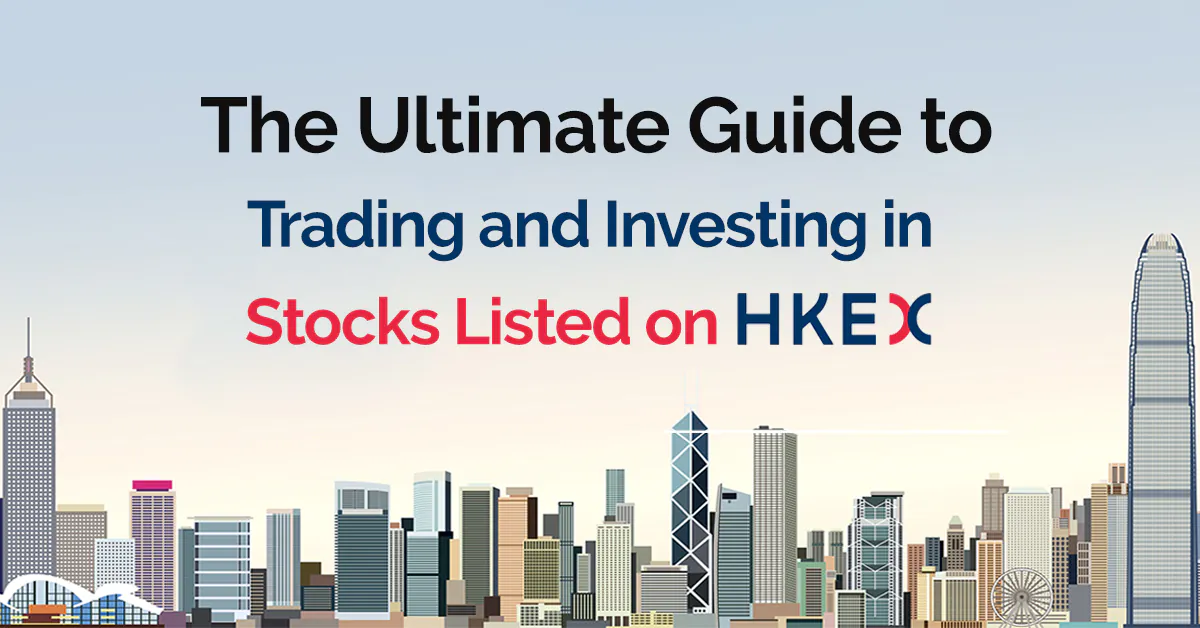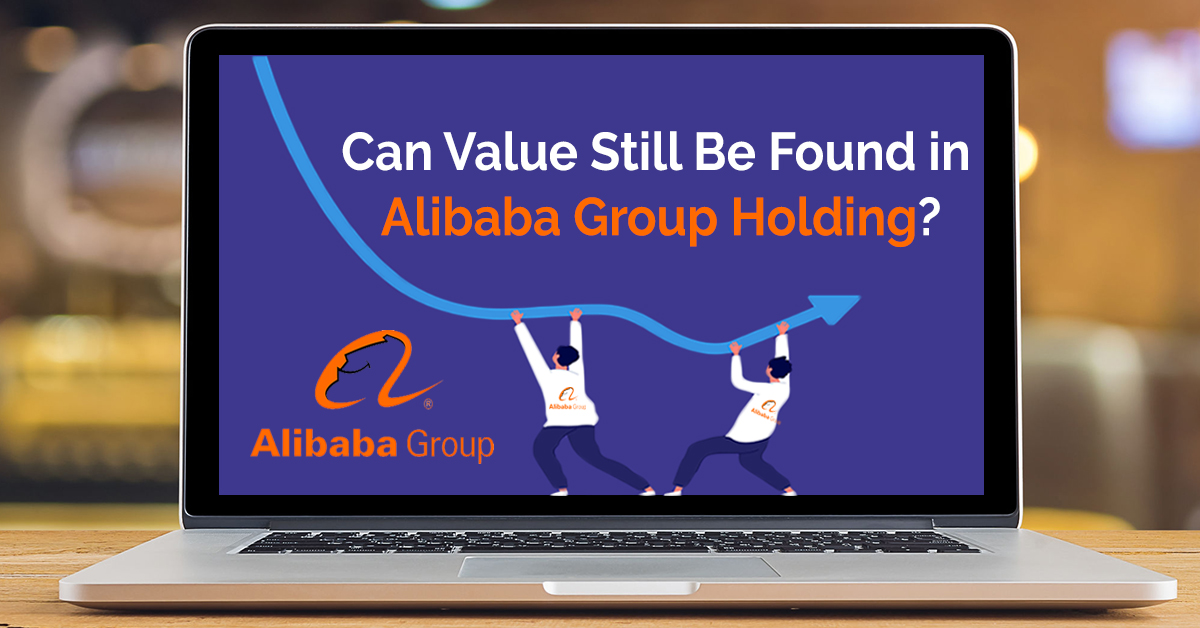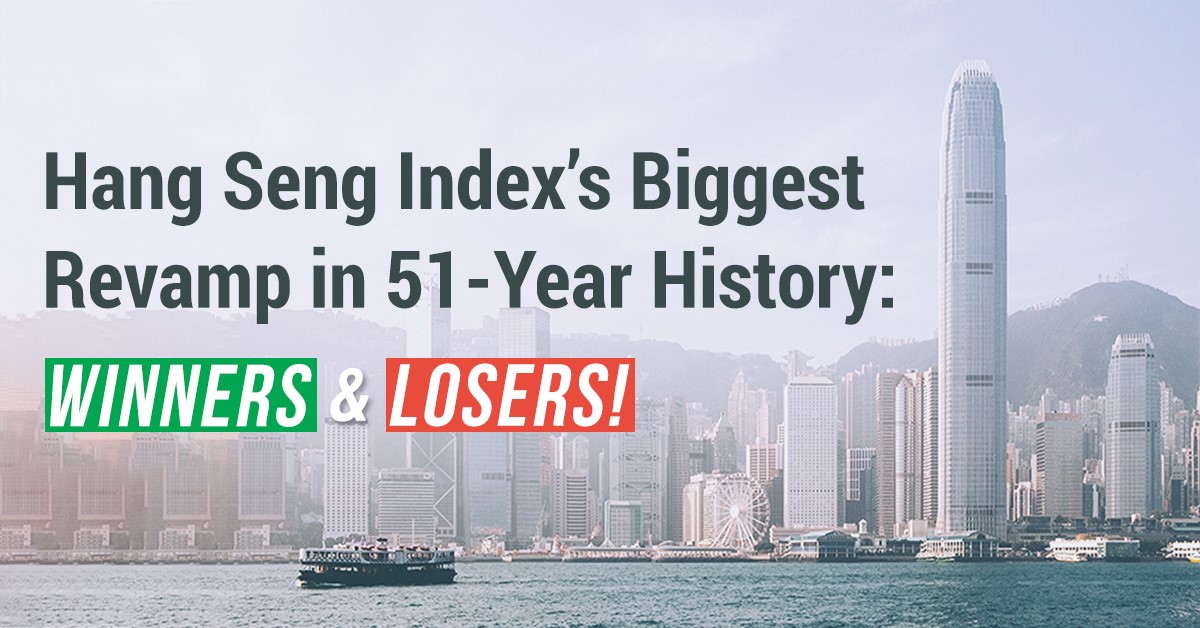Learning Lessons from Evergrande
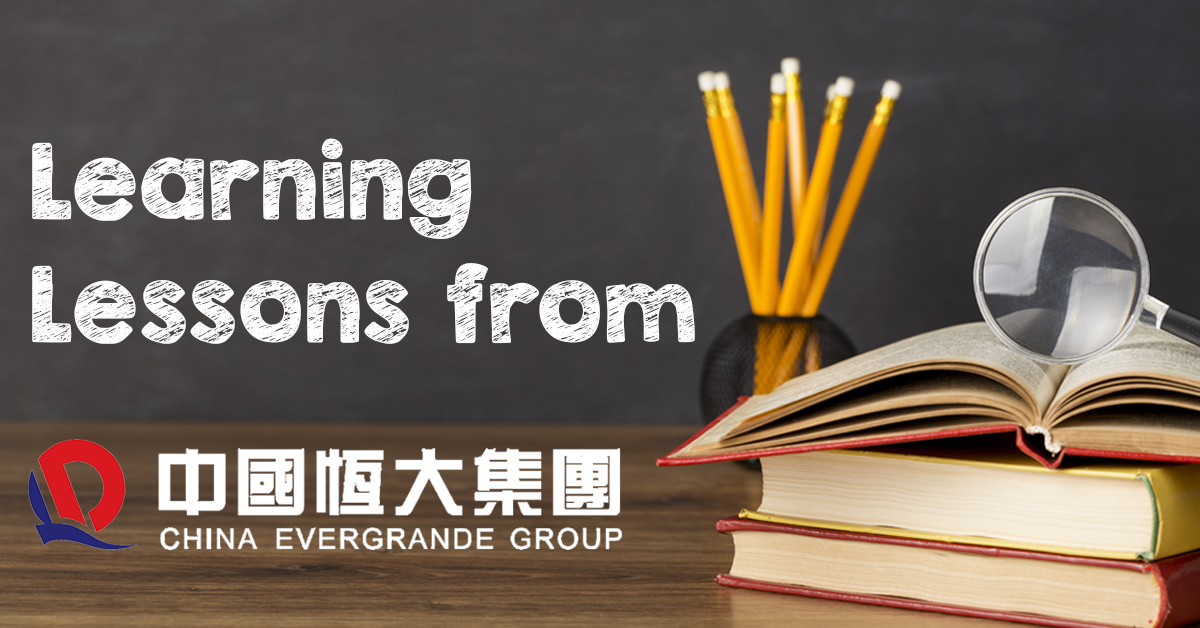
Mike Ong, Assistant Manager, Dealing
Mike is a member of the largest dealing team that specialises in Equities, ETFs, CFDs & Bonds, and manages >50,000 client accounts in Phillip Securities. He believes in investing long-term for passive income and evaluates stocks using fundamentals.
He is currently the chief editor of the HQ education series that aims to equip clients with tools and skill sets to make better investing and trading decisions.
What this report is about:
- Understanding Evergrande’s business developments
- Diving into earning financial result
- Learning lesson from Evergrande
In recent weeks, we have seen countless news headlines on Evergrande’s crisis. The share price has collapsed through this year from HKD$14.14 on 4 January 2021 to a year low of HKD$2.06 on 21 September 2021. Although the share price has rebounced from the low, investors still holding on to their Evergrande shares anticipate a loss of more than 70%. It is beneficial for us to learn from their experience and avoid making these mistakes ourselves
Let’s explore Evergrande's business developments over the years:
Source: POEMS
Figure 1: Leading Chinese real estate companies on the Fortune China 500 ranking as of 2021 in terms of revenue in billion yuan2
As the leading Chinese real estate company with the highest revenue, how did Evergrande get into a debt crisis?
To understand better, we would need to dive into Evergrande’s earning financial results.
One of the first things we would examine is the revenue of a company. Revenue is the total amount of income generated by the company’s primary operation, through the sales of their goods or services. We also refer to revenue as the top line as it is located at the top of the income statement.
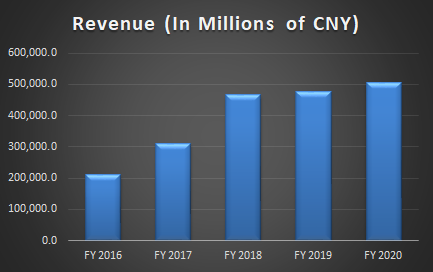
Looking at Evergrande’s revenue in the past 5 years, we can see that it has been able to grow its revenue despite slowing down in the last 2 years. With the revenue growing well, we would anticipate high net income.
Net income is equivalent to the revenue minus the cost of goods sold, selling, administrative expenses, operating expenses, interest tax, interest, depreciation and other expenses. This is also known as the bottom line.
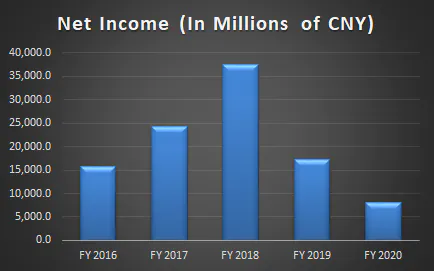
From the chart, we can see that the net income has been growing initially but has been on a downward trend for the last 2 years. We can see that there is a clear disconnect between revenue and net income. Furthermore, net income can be subjected to accounting manipulation and fraud, therefor it is essential for us to also consider their net cash flow.

Cash flow from the operation is an important indicator for us to determine how successful a company is for core business activities. From figure 4, we can see that Evergrande’s cash flow from their operations has been red for 3 (out of 5) years. This is a red flag that their main businesses are not generating sufficient cash flow to keep their operations afloat.
Moving on to cash flow from investing activities, they are generated or spent on non-current assets that are intended to produce a profit in the future. It is quite common for the property sector to experience negative cash flow from investing activities due to common expenditures such as land purchases.
In order to support both operating and investing activities, they can only do it through financing activities. This includes sources of cash from investors or banks, as well as the uses of cash paid to bondholders and shareholders.
Evergrande has been trying to borrow from banks, issuing bonds and selling wealth management products through China Evergrande group. Reuter has reported that more than 80,000 people including employees, their families and friends as well as owners of Evergrande properties, were lured by the promise of yields approaching 12%. As a result, they bought wealth management products with more than 100 billion yuan in the past 5 five years3. Such high yield products are too good to be true for investors and unsustainable for Evergrande.
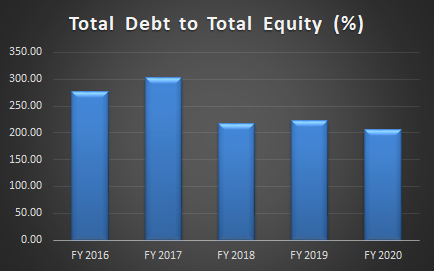
From the total debt to total equity ratio, it has consistently been above 100% for the past few years. This is above the three red lines guidance that the Chinese government set last year.4
- a 70% ceiling on liabilities to assets, excluding advance proceeds from projects sold on contract
- a 100% cap on net debt to equity ratio
- a cash to short-term borrowing ratio of at least one
If developers fail to meet a minimum of at least one of the “three red lines’, regulators would place restrictions on the extent to which they can grow their debt. Evergrande is not the only property developer that has been using debt to grow their business, however this is unsustainable in the long run. This has led to the housing price bubble in China. In our previous article, China has also highlighted that sustainable growth is one of the key areas to focus in their 14th five-year plan.
From the Wall Street Journal, Chinese authorities are asking local governments to prepare for the potential downfall of China Evergrande Group5. There is also a number of China developers in similar situations. Has the worst scenario of the Evergrande Saga played out yet?
Learning Lessons from Evergrande
In our recent article on “how to prepare your portfolio for rising interest rate environment”, I have pointed out and zoomed in on companies that are heavily dependent on debt, and would be negatively affected when the interest rate starts to go up. They would have to shoulder higher interest expenses which would affect their profitability or dividend payouts. They could also be forced to raise equity to lower their debt. This would lead to dilution for existing shareholders. We should therefore:
- Look beyond the revenue and net income as the company might be heavily depend on debt for growth
- Observe the trend of cash flow from their operations
- Observe their net cash flow
- Observe their trend debt ratio
Hence, it is important for us to dive deeper into a company’s financial result, rather than the mere scraping of their revenue and net income. This would paint a clearer picture for our investment journey.
How to gain exposure?
Investors and traders with a bigger risk appetite may consider using Contracts for Differences (CFDs) to gain exposure to these stocks.
CFDs are versatile tools for investors, particularly those who take an active approach to investing. They can be used for hedging, short-selling and leveraged trading. CFDs are traded on margin, which means you would only need to put up a fraction of the full value of your trade upfront.
CFDs are also ideal tools for people with less capital but wish to capitalise on the growth potential of certain industries. Or they could simply wish to take advantage of the latest market movements regardless of its direction.
Both your potential profits and losses are amplified when you trade CFDs. Hence, CFDs may not be suitable for investors whose investment objective revolves around capital perseverance and/or whose risk tolerance is low.
To understand more, refer to our article on “Understanding Contracts for Differences”.
Thank you for staying with us till the end of this lengthy read! We sincerely hope that you’ve found value in reading our article.
If you do not have a POEMS account, you can check out this link or scan the QR code below to open one with us today!
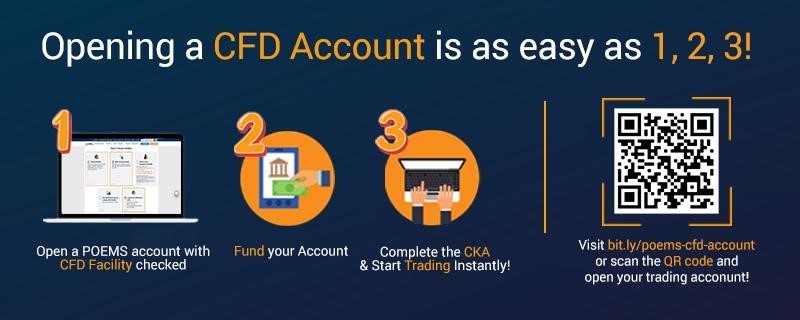
More Articles
The Ultimate Guide to Trading and Investing in Stocks Listed in HKEX
Fun fact: Did you know? The Hong Kong Stock Exchange finished 2020 as the second-biggest IPO market globally! Read our latest article to find out more!
Can Value Still Be Found in Alibaba Group Holding?
Can Value still be found in Alibaba Group Holding? Read our article to find out more!
Hang Seng Index's Biggest Revamp in 51-Year- History: Winners & Losers
Who are the potential winners and losers for the revamp of the Hang Seng Index? Read on our article to find out more!
Disclaimer
This material is provided to you for general information only and does not constitute a recommendation, an offer or solicitation to buy or sell the investment product mentioned. It does not have any regard to your specific investment objectives, financial situation or any of your particular needs. Accordingly, no warranty whatsoever is given and not liability whatsoever is accepted for any loss arising whether directly or indirectly as a result of your acting based on this information.
Investments are subject to investment risks. The risk of loss in leveraged trading can be substantial. You may sustain losses in excess of your initial funds and may be called upon to deposit additional margin funds at short notice. If the required funds are not provided within the prescribed time, your positions may be liquidated. The resulting deficits in your account are subject to penalty charges. The value of investments denominated in foreign currencies may diminish or increase due to changes in the rates of exchange. You should also be aware of the commissions and finance costs involved in trading leveraged products. This product may not be suitable for clients whose investment objective is preservation of capital and/or whose risk tolerance is low. Clients are advised to understand the nature and risks involved in margin trading.
You may wish to obtain advice from a qualified financial adviser, pursuant to a separate engagement, before making a commitment to purchase any of the investment products mentioned herein. In the event that you choose not to obtain advice from a qualified financial adviser, you should assess and consider whether the investment product is suitable for you before proceeding to invest and we do not offer any advice in this regard unless mandated to do so by way of a separate engagement. You are advised to read the trading account Terms & Conditions and Risk Disclosure Statement (available online at www.poems.com.sg) before trading in this product.
Any CFD offered is not approved or endorsed by the issuer or originator of the underlying securities and the issuer or originator is not privy to the CFD contract. This advertisement has not been reviewed by the Monetary Authority of Singapore (MAS).





